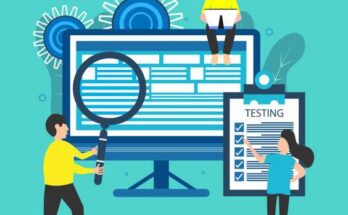Table of Contents
Emerging Trends in Product Testing

Product testing is a critical component of the product development lifecycle, ensuring that products meet quality standards and customer expectations. As technology advances and consumer demands evolve, the landscape of product testing is undergoing a significant transformation. Here are some emerging trends shaping the future of product testing:
1. Automation and AI:
- Test automation: The adoption of automated testing tools is rapidly increasing, enabling faster, more efficient, and more accurate testing. AI-powered automation can handle repetitive tasks, reduce human error, and accelerate time-to-market.
- AI-driven testing: AI algorithms can analyze vast amounts of data to identify patterns, predict failures, and optimize test cases. This can help improve test coverage, reduce costs, and enhance overall product quality.
2. Shift-Left Testing:
- Early testing: Shift-left testing involves incorporating testing activities earlier in the development process, rather than waiting until the end. This helps to identify and address defects sooner, reducing rework and improving product quality.
- Continuous testing: Continuous testing involves integrating testing into the development pipeline, ensuring that code is tested frequently and automatically. This provides immediate feedback to developers and helps to maintain a high level of quality throughout the development process.
3. Mobile and IoT Testing:
- Mobile app testing: With the growing popularity of smartphones and tablets, mobile app testing has become a crucial aspect of product development. This involves testing apps on various devices, operating systems, and network conditions to ensure a seamless user experience.
- IoT testing: The Internet of Things (IoT) has introduced new challenges and opportunities for product testing. IoT devices require testing in real-world environments, considering factors such as connectivity, security, and compatibility.
4. Cloud-Based Testing:
- Scalability and flexibility: Cloud-based testing platforms offer scalable infrastructure and flexible testing environments, allowing teams to test products on a variety of configurations without the need for significant upfront investments.
- Accessibility and collaboration: Cloud-based testing tools can be accessed from anywhere, facilitating collaboration among distributed teams.
5. Performance Testing:
- User experience: Performance testing is becoming increasingly important as consumers demand fast and responsive applications. It involves measuring metrics such as response time, load capacity, and scalability.
- AI-driven performance optimization: AI can analyze performance data to identify bottlenecks and suggest optimization strategies.
The Impact of Technology on Product Testing
Technology is playing a pivotal role in transforming the way product testing is conducted. Here are some key areas where technology is making a significant impact:
1. Test Data Management:
- Synthetic data generation: AI-powered tools can generate synthetic data that mimics real-world data, helping to protect sensitive information and improve test coverage.
- Data anonymization: Technologies like data masking and tokenization can protect personal and confidential data during testing.
2. Test Environment Management:
- Virtualization: Virtualization technologies allow teams to create and manage test environments on demand, reducing costs and improving efficiency.
- Containerization: Containerization technologies like Docker provide a lightweight and portable way to package and deploy applications, making it easier to manage test environments.
3. Test Reporting and Analytics:
- Automated reporting: Automated tools can generate detailed test reports, providing insights into test coverage, defect rates, and performance metrics.
- Advanced analytics: AI-powered analytics can help identify trends, root causes of failures, and areas for improvement.
4. Test Automation Frameworks:
- Open-source frameworks: Popular open-source frameworks like Selenium, Appium, and JMeter provide a solid foundation for building automated test scripts.
- Codeless automation: Codeless automation tools make it easier for non-technical users to create and execute automated tests.
Future Opportunities for Product Testers
As the landscape of product testing continues to evolve, there are exciting opportunities for product testers to develop new skills and contribute to the success of their organizations. Here are some potential areas of growth:
1. AI and Machine Learning:
- AI-driven test case generation: Product testers can leverage AI to generate test cases based on requirements and historical data.
- Predictive analytics: By analyzing test data, product testers can predict potential failures and proactively address them.
2. DevOps and Agile:
- Continuous testing integration: Product testers can play a key role in integrating testing into DevOps pipelines, ensuring that quality is maintained throughout the development lifecycle.
- Agile methodologies: Understanding Agile methodologies can help product testers collaborate effectively with development teams and contribute to the success of Agile projects.
3. Cybersecurity Testing:
- Vulnerability testing: As cybersecurity threats continue to grow, there is a growing demand for product testers with expertise in vulnerability testing and penetration testing.
- Privacy compliance testing: Product testers can help ensure that products comply with privacy regulations such as GDPR and CCPA.
4. Performance Engineering:
- Performance optimization: Product testers can work with developers to optimize product performance, ensuring a positive user experience.
- Load testing: Understanding load testing techniques can help product testers identify and address performance bottlenecks.
5. IoT Testing:
- IoT security testing: With the increasing adoption of IoT devices, there is a need for product testers who specialize in IoT security testing.
- IoT compatibility testing: Product testers can ensure that IoT devices are compatible with different networks and platforms.
Conclusion
The future of product testing is bright, with exciting opportunities for professionals to contribute to the development of high-quality products. By embracing emerging trends such as automation, AI, and cloud-based testing, product testers can help their organizations stay ahead of the curve and deliver exceptional products to their customers. As technology continues to advance, the role of product testers will become increasingly important in ensuring that products meet the evolving needs and expectations of consumers.



